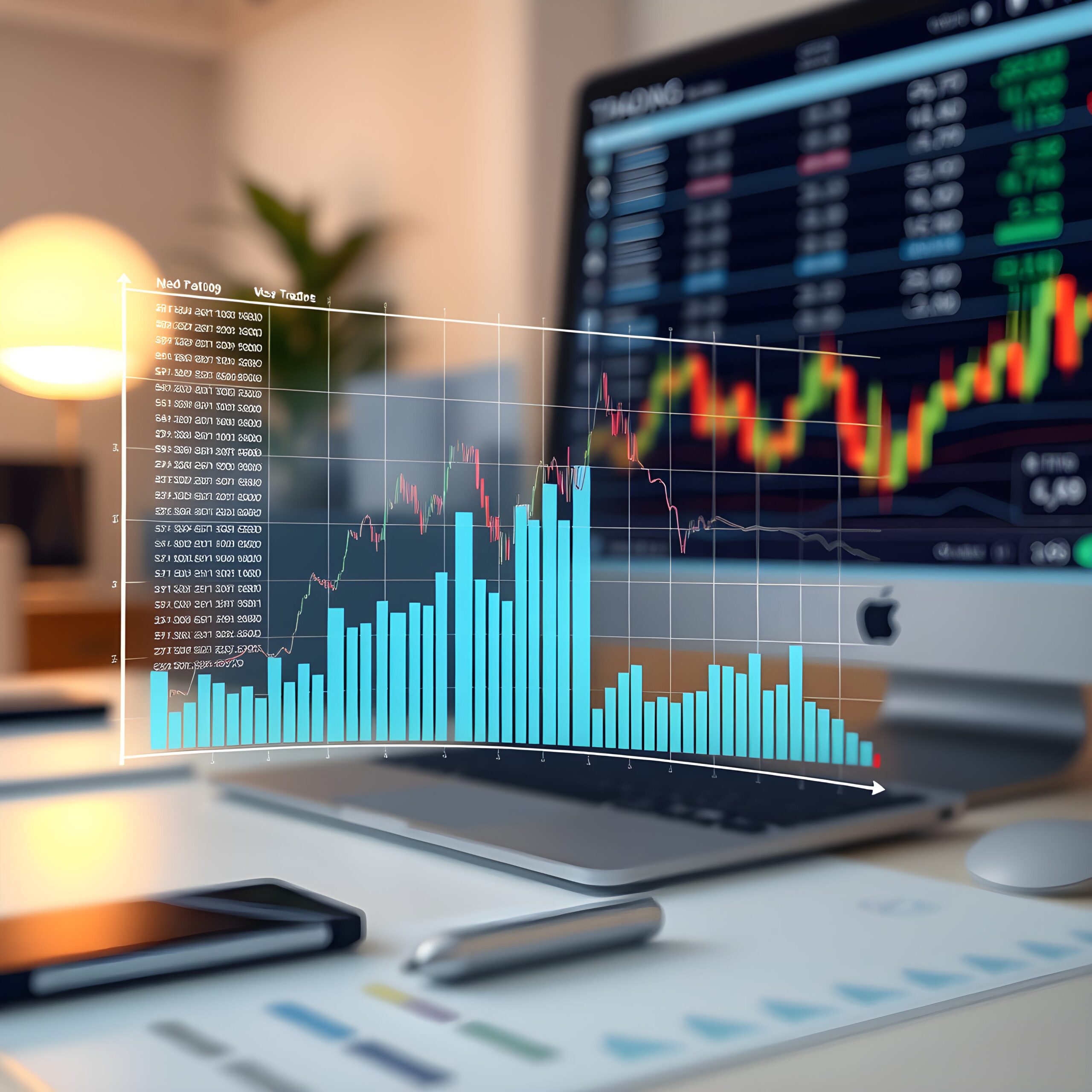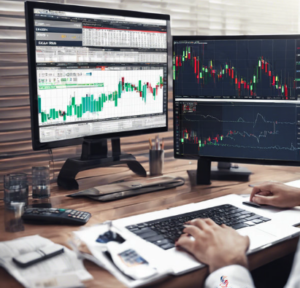
As stock prices hit record highs in recent years, the U.S. stock market has become the subject of increasing scrutiny. While some investors cheer the bull market and the profits it has generated, others have begun to sound alarms, warning that we may be in the middle of a bubble, unlike anything seen before. In December 2024, a prominent market expert boldly declared that U.S. stocks are currently in the “greatest bubble in the history of civilization.” This expert argues that the catalyst behind this extreme market distortion is the Federal Reserve’s monetary policies, which have flooded the economy with cheap money, enabling excessive risk-taking and inflating asset prices far beyond their actual value.
The warning has garnered significant attention and sparked debate about the sustainability of the current market conditions. The fact that stock prices are reaching new heights while the economy faces underlying challenges has made this issue even more pressing. The stock market’s sharp ascent has created a growing disconnect from the broader economy, and many wonder when, or if, this bubble will burst.
In this article, we explore why the stock market is considered to be in a bubble, the Federal Reserve’s role in inflating it, and the risks associated with such an environment. We will also examine potential consequences for the market and investors and discuss the actions the Federal Reserve might take to manage the situation. By the end of this article, you will have a comprehensive understanding of why many believe we are experiencing the greatest market bubble in history—and how the Fed’s actions have played a central role.
The Origins of the Bubble:
A market bubble occurs when asset prices, including stocks, rise far beyond their intrinsic value. This phenomenon is typically driven by speculation, irrational exuberance, and excessive liquidity, rather than by fundamental factors such as corporate earnings or economic growth. Bubbles are often characterized by rapid price increases followed by sharp declines, known as “crashes.”
Historically, the U.S. has experienced several notable market bubbles. The dot-com bubble in the late 1990s, fueled by speculation surrounding internet companies, saw stock prices soar to unsustainable levels, only to collapse when the promised growth did not materialize. Similarly, the housing bubble of the mid-2000s was driven by easy credit, subprime mortgages, and a speculative frenzy in the real estate market. As housing prices rose, more people bought homes with borrowed money, pushing prices even higher. The eventual collapse led to the 2008 financial crisis.
The current stock market bubble, however, is different. Many market analysts believe that this one is more extreme and involves a broader array of assets, including equities, bonds, and real estate. The defining characteristic of this bubble is the role of central banks, particularly the Federal Reserve, which has been the primary source of liquidity. Through a combination of ultra-low interest rates, quantitative easing, and other policies, the Fed has created an environment where cheap credit flows into the economy, inflating asset prices across the board.
Over the past decade, the stock market has risen significantly, with major indices like the S&P 500 and NASDAQ more than tripling in value. While this growth has been beneficial for investors, it has also created an increasingly volatile and unsustainable environment. As stock prices climb ever higher, the risk of a sharp correction grows more pronounced.
The Federal Reserve’s Monetary Policy:
The Federal Reserve’s policies have been the cornerstone of the current market conditions. Since the 2008 financial crisis, the Fed has used a range of unconventional monetary tools to stimulate the economy and support financial markets. Interest rates were slashed to near-zero levels, and the Fed embarked on a policy of quantitative easing (QE)—buying massive amounts of government bonds and other securities to inject money directly into the financial system.
The goal of these policies was to make borrowing cheaper, encourage investment, and revive economic growth. However, these actions also had unintended consequences. By lowering interest rates and flooding the economy with money, the Fed made it easier for investors to access cheap credit, which incentivized them to take on more risk. As a result, the prices of risk assets—such as stocks—soared, far outpacing the underlying fundamentals.
The Fed’s approach was particularly pronounced during the COVID-19 pandemic. In response to the economic shock caused by lockdowns and restrictions, the Federal Reserve slashed interest rates even further and expanded its bond-buying program. While these measures helped stabilize markets in the short term, they also inflated stock prices, particularly in tech stocks, as investors sought higher returns in a low-interest-rate environment.
One of the key criticisms of the Fed’s policies is that they have artificially inflated the stock market, creating a bubble. Proponents of this view argue that asset prices are no longer based on corporate earnings, future growth prospects, or other traditional metrics, but rather on the abundance of cheap money. This has led to a market where prices are disconnected from reality, with speculative behavior driving prices higher and higher.
Current Stock Market Conditions:
The stock market’s current conditions are indicative of a bubble in progress. Stock indices like the S&P 500, Dow Jones, and NASDAQ have reached record highs, even as underlying economic indicators suggest that the economy is far from robust. Corporate earnings growth has slowed, while inflation has surged, raising concerns about future growth prospects. The market seems to be operating in a vacuum, driven more by momentum than by fundamentals.
A critical indicator of overvaluation is the price-to-earnings (P/E) ratio, which compares a company’s stock price to its earnings per share. The historical average for the S&P 500’s P/E ratio is around 15-16. However, in 2024, this ratio has risen above 25, signaling that stocks are, on average, more expensive than they have been in the past. This is particularly concerning because rising stock prices have not been accompanied by proportional increases in corporate earnings, which means that stock valuations are no longer justified by the underlying financial health of companies.
The disconnect between the stock market and the real economy is another sign of a bubble. While stock prices have surged, key sectors of the economy—such as manufacturing, real estate, and small businesses—have struggled. Despite this, large-cap tech stocks have continued to soar, leading to a situation where the market as a whole appears to be vastly overvalued compared to the broader economy. The rise of speculative trading, including meme stocks and cryptocurrency-related investments, has also contributed to this bubble mentality.
This situation has left many wondering how long the market can continue to climb. If stock prices continue to rise without corresponding growth in the economy, the risk of a sudden market correction becomes more likely. Such a correction would have significant repercussions for both individual investors and the broader financial system.
Inflation and Debt:
Inflation and rising debt levels are two critical factors contributing to the stock market bubble. In the wake of the financial crisis and the pandemic, the Federal Reserve’s loose monetary policies have resulted in both rising debt levels and increasing inflationary pressures. These two factors are directly linked to the stock market’s performance.
On one hand, the rising debt levels—both corporate and governmental—have created an environment where asset prices are artificially supported. Low interest rates made borrowing cheaper for businesses, enabling them to take on more debt. Many companies used this borrowed money for stock buybacks and acquisitions, which temporarily boosted stock prices but left companies with larger debt loads. As interest rates rise and the cost of borrowing increases, these companies will face greater financial strain, which could lead to defaults and a correction in stock prices.
On the other hand, inflation erodes the purchasing power of consumers and increases costs for businesses. In response to higher prices, the Federal Reserve may be forced to raise interest rates to curb inflation. However, raising rates would increase borrowing costs, slowing down the economy and possibly leading to a market crash.
Inflation and debt are intertwined, and both pose significant risks to the stock market. Should inflation continue to rise, and interest rates follow suit, investors could face significant losses. The combination of increasing debt and rising inflation could trigger a market correction or even a crash, making it imperative for investors to adjust their strategies accordingly.
The Risks of an Unwinding:
As the bubble continues to inflate, the risks associated with a market correction or crash grow more pronounced. The history of market bubbles is filled with examples of massive crashes, where investors lost trillions of dollars in value. The dot-com bubble of the late 1990s, the housing bubble of the mid-2000s, and the global financial crisis of 2008 all serve as reminders of how quickly a bubble can burst and how devastating the consequences can be.
One of the most significant risks is that the Federal Reserve may be forced to raise interest rates to combat inflation. As borrowing becomes more expensive, consumers and businesses will likely reduce their spending and investment, putting downward pressure on stock prices. This could lead to a chain reaction, with falling stock prices triggering a broader economic downturn.
The growing levels of leverage in the system are also concerning. Many investors have borrowed money to buy stocks, increasing their exposure to market fluctuations. If stock prices begin to fall, these investors will face margin calls, forcing them to sell assets to cover their loans. This could exacerbate the decline in stock prices, leading to a more severe market correction.
Looking Forward:
The future of the stock market remains uncertain, with many analysts predicting either a gradual deflation of the bubble or a more dramatic correction. Some believe that the stock market will continue to rise in the short term as the Fed maintains its low interest rate policies, but the risk of a sudden and sharp decline is real. Others worry that the bubble will burst when inflation pressures and interest rate hikes trigger a market crash.
For investors, this is a time to reassess their risk exposure and adjust their portfolios accordingly. Those who have invested heavily in overvalued stocks may want to consider diversifying into safer assets, such as bonds or commodities, that are less susceptible to market swings.
The warning of a historic stock market bubble is not to be taken lightly. The Federal Reserve’s policies have played a significant role in inflating the bubble, and the risks of a correction or crash are increasing. Whether the market corrects gradually or crashes suddenly, the potential consequences for investors are substantial. By understanding the causes of this bubble and the risks it presents, investors can take steps to protect their wealth and position themselves for future growth.
Feel free to check out our other website at : https://synergypublish.com

